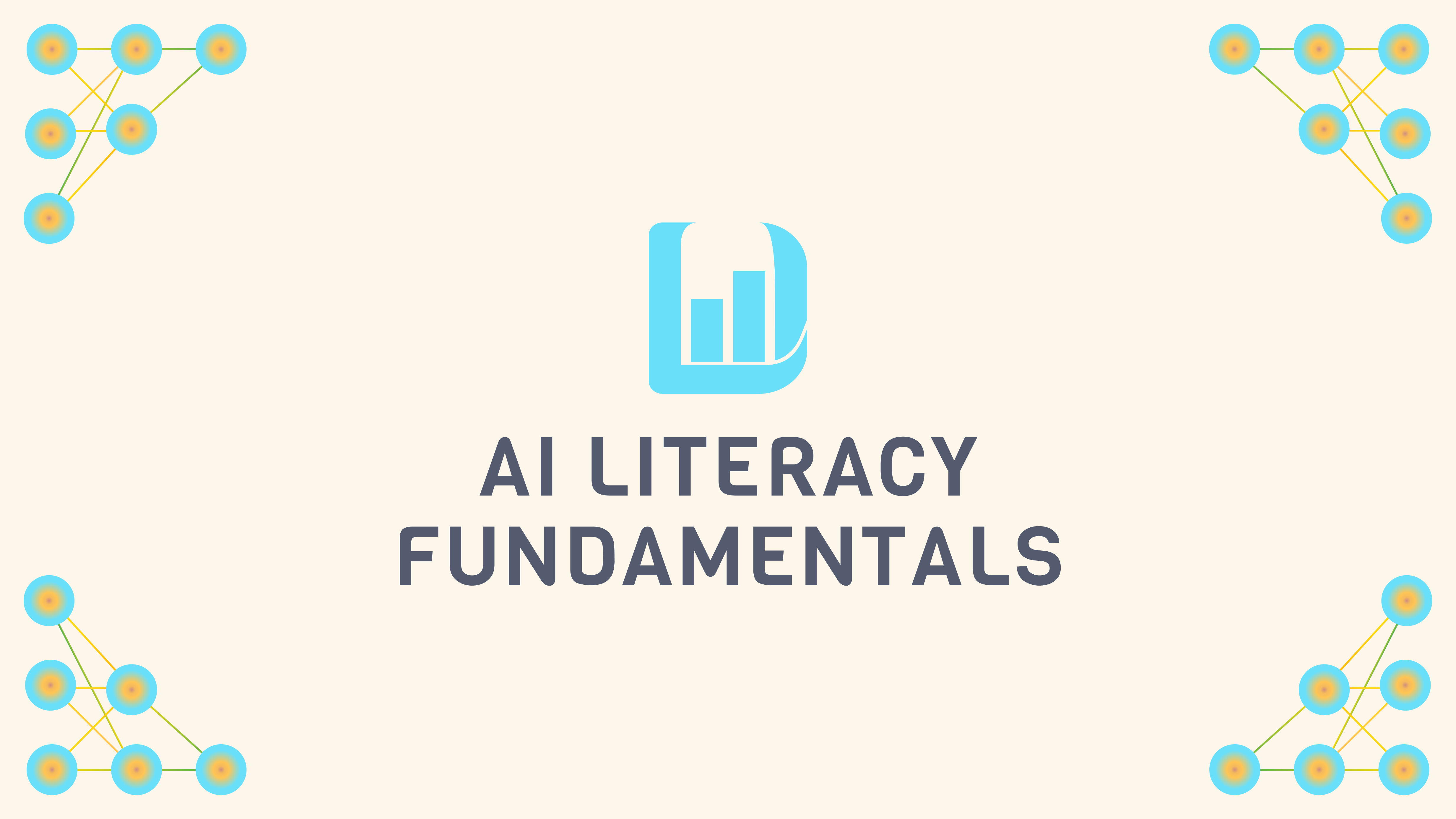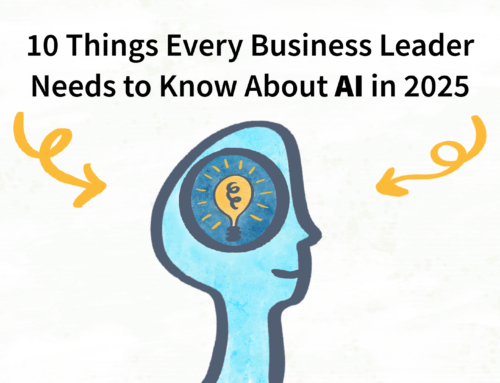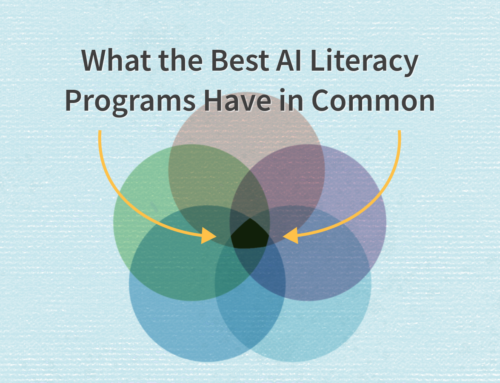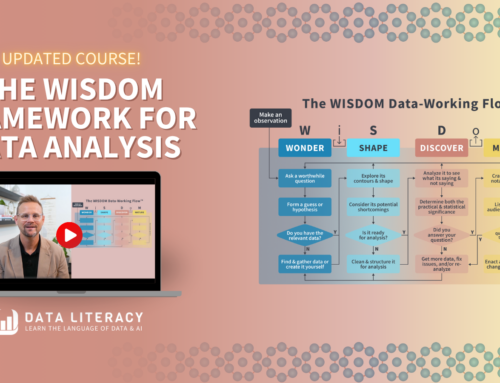What Is AI Literacy?
Artificial intelligence, or AI, involves giving computers the ability to solve problems and perform tasks that typically require human intelligence. AI technologies are in use where we work, where we live, and where we interact and transact online.
Discussion of AI has skyrocketed in recent months. While that’s partly due to marketing hype, there’s no doubt that AI, especially generative AI, is on the rise. As our usage of AI continues to expand in professional, private, and public life, it’s important that each of us has at least a basic level of AI literacy so that we can participate in the conversations that are happening all around us.
But what is AI literacy? Simply, AI literacy is the ability to recognize, grasp, use, and critically assess artificial intelligence technologies and their impacts.
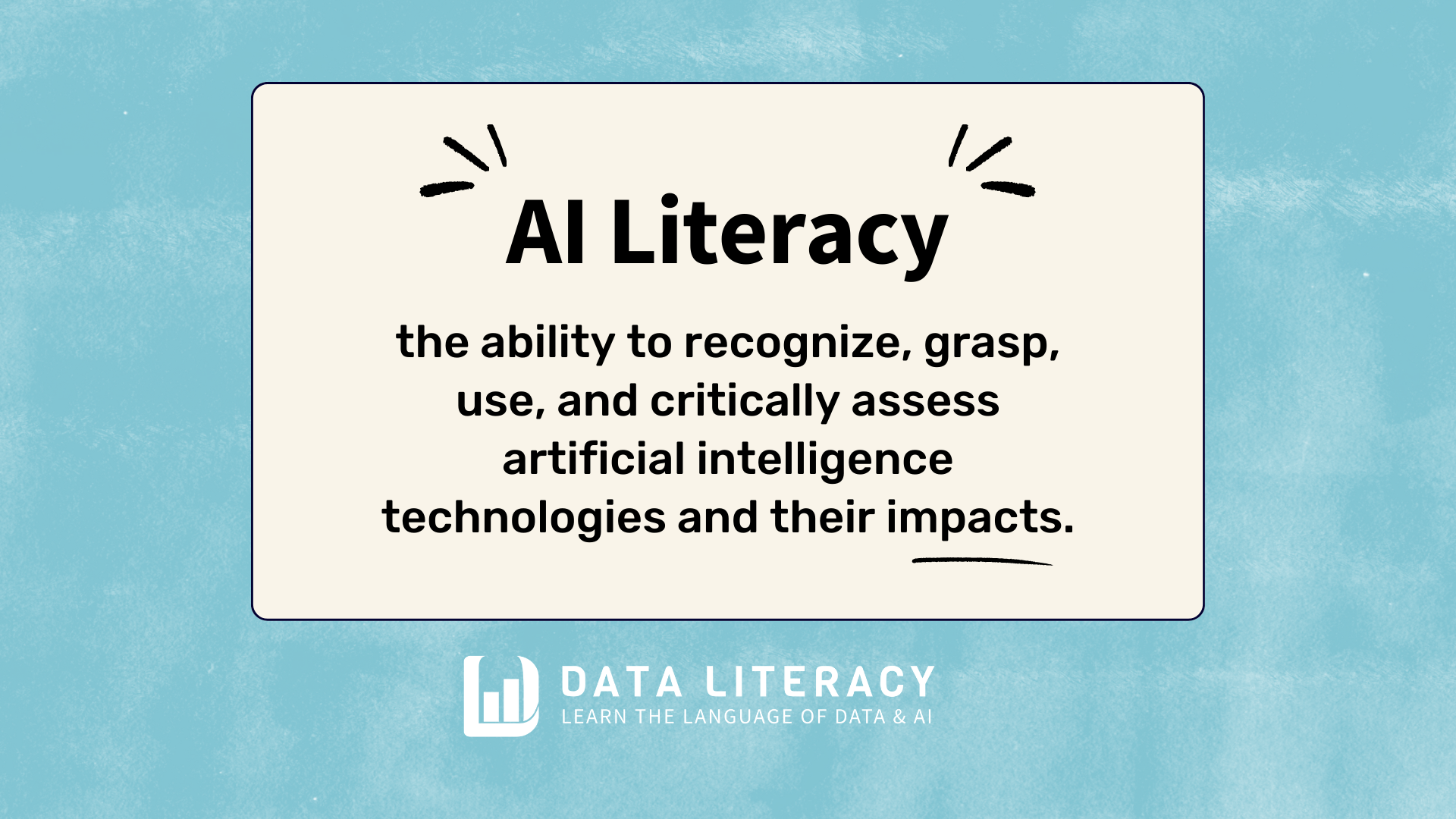
As you can see, this definition includes four different components:
- The ability to RECOGNIZE AI
- The ability to GRASP AI
- The ability to USE AI
- The ability to CRITICALLY ASSESS AI
Let’s go through each of the components one by one so that you can have a better understand of what each of them entails.
1. The ability to RECOGNIZE AI

In order to join the conversations around AI, we first need to be able to know it when we see it. Recognizing AI means that we are aware of many of the everyday applications of AI, including, to name just a few:
- email spam filters
- streaming service recommendation engines
- mobile check depositing applications
- virtual assistants that respond to voice commands
- sales lead scoring systems at work
This is, of course, just scratching the surface. AI is being used in more and more applications all around us, and AI literacy starts with the ability to spot it when we encounter it.
2. The ability to GRASP AI:

To grasp something means to comprehend it, or to “lay hold of it with the mind.” We begin to grasp AI when we learn about the basic concepts of AI, including machine learning and deep learning – methods we use to train computers using data to perform specific tasks.
- levels of AI, from artificial narrow intelligence (ANI) to artificial general intelligence (AGI)
- branches of AI, including symbolic AI (classic AI) and subsymbolic AI (connectionist AI)
- forms of machine learning (supervised, unsupervised, reinforcement learning)
- types of training data and their effects on model performance
- various types of deep neural networks and their functionality
There are varying levels of comprehension, of course, and each of these topics is an entire subfield within the broader field of AI. And the truth is that there’s still much that experts don’t fully grasp about how deep neural networks are able to do what they can do. But we can understand the fundamental ideas and approaches that are used, and then grow from there.
3. The ability to USE AI:

Knowing about AI is necessary but not sufficient. AI is a tool, so in order to get value from it, we need to be able to actually use it. As with data, there are different skill levels when it comes to engaging with AI. Consider the following list of activities, ordered by increasing level of skill and sophistication:
- APPLY: using AI applications that others have created,
- UTILIZE: putting existing AI models to use in new ways,
- ADJUST: customizing or fine tuning foundational AI models,
- BUILD: creating brand new AI models using existing methods, and
- INVENT: researching and developing new AI methods and techniques
AI isn’t a spectator sport, it’s an active, participatory one. In order to become highly AI literate, we need to know how to put AI to good use, and we need to know how to avoid the many pitfalls of AI.
Which leads us to the fourth and final element of the definition of AI literacy…
4. The ability to CRITICALLY ASSESS AI:
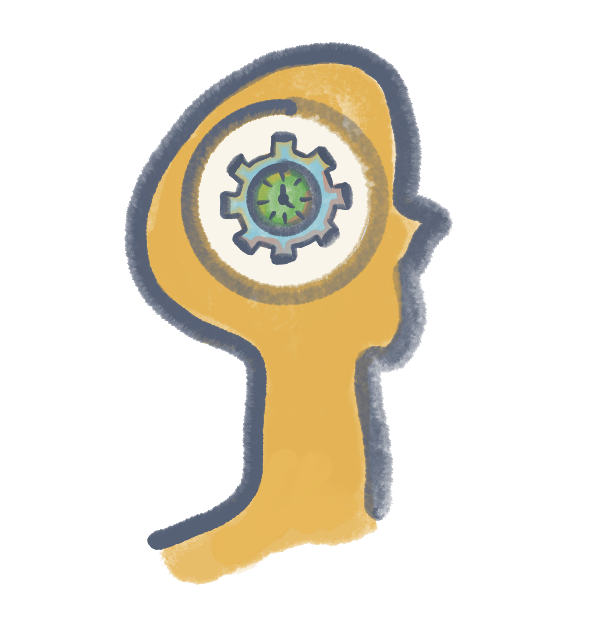
AI can be thought of as an incredibly helpful assistant to humanity. But the truth is, it can be used in harmful ways as well. The final element in the definition of AI literacy involves parsing out the good and the bad, and discerning between the blessings of AI and the burdens that come along with them.
AI can do so much for us, including:
- automating tedious and mundane tasks
- providing insightful decision support
- driving economic growth and profitability
- optimizing energy usage in homes and cities
But there are also major concerns associated with the use of AI, and very real harms that result from its utilization, including:
- further cementing unfairness via algorithmic bias
- displacing jobs and entire professions in many industries
- deepening inequalities in distribution of wealth
- requiring massive amounts of energy to train and operate
- potentially infringing on copyright protections
These are just a handful of the many pros and cons of AI. Instead of seeing AI as only helpful or only harmful, the highly AI literate person realizes the balanced truth that AI is both at the same time; it’s a mixed bag!
AI Literacy and Data Literacy
How does AI literacy compare with data literacy? Our definition of data literacy is that it’s the ability to read, understand, create, and communicate data as information. You can think of AI literacy and data literacy as related and even coupled. Together, they represent the biggest education gap of our time. Much needs to be done to close this education gap.
Here’s the catch, though: true AI literacy requires data literacy. The reason for this is that AI is largely based on and influenced by data: structured data, unstructured data, labeled data, unlabeled data, clean data, dirty data – all of the above.
In order to truly understand an AI model or engage with an AI application, it’s necessary to have at least a basic understanding of the data that was used to train it. For that reason, growing in AI literacy and growing in data literacy go hand in hand.
And an investment in both data and AI literacy will pay great dividends. We need to speak the languages of data and AI no matter what our line of work. This is why, we’re committed to helping you in both of these related areas. We believe in it so much, we updated our company tagline:

How to Grow in Data & AI Literacy
If you’d like to invest in your own knowledge and skills in these two critical areas, you can research the many courses and resources that are available today. Only a few years ago, data literacy was a niche topic, but now it’s a full-fledged movement. Many organizations exist around the world to help you get caught up to where you need to be. We offer multiple levels of training to help you or your team learn and grow in steps.
And the budding AI Literacy movement is only a few years behind the Data Literacy movement in maturity. Based on the amount of effort going into this area, it will soon catch up. We believe that ultimately, these two movements will join and become one single movement: the Data & AI Literacy movement.
Here at Data Literacy, we aim to be your one-stop shop for assessments and training in both aspects of this combined movement. We have created AI Literacy Fundamentals, and we believe it’s the perfect starting point for beginners to AI. The companion book is available in both digital and paperback format, you can take the course on-demand, and our trainers would be delighted to lead your corporate group through live, customized training sessions, either virtually or on site. Fill out this short form to schedule a free consultation today.
If you’d like to hear more about how to make AI Literacy Fundamentals available to team members within your organization, fill out Team Training Inquiry form.
If you’d like to be notified as soon as this new course becomes available, and to be considered for early-access and special discounts, add your name to the waitlist by filling out this short form:

